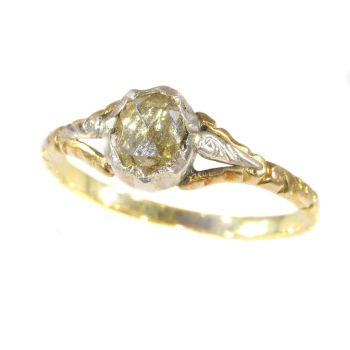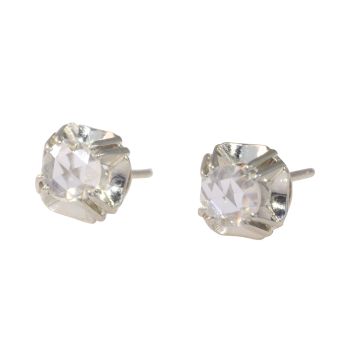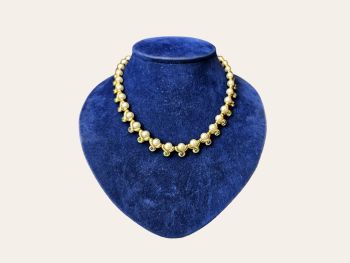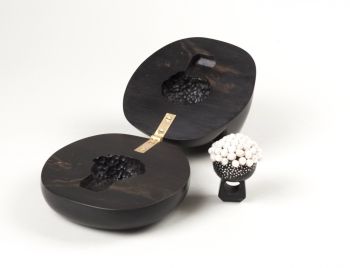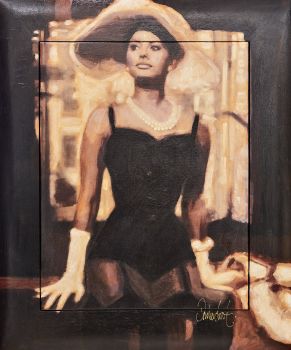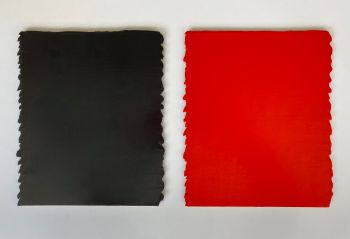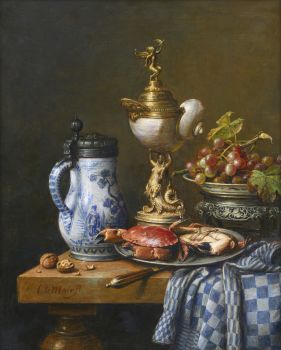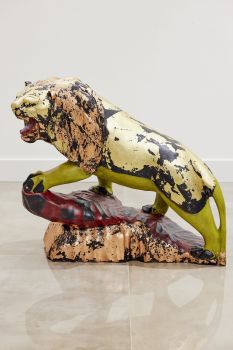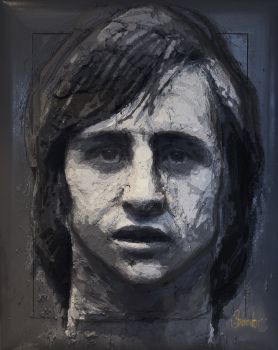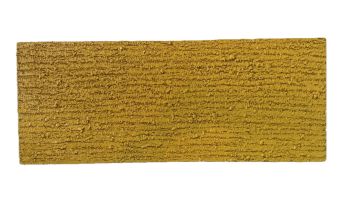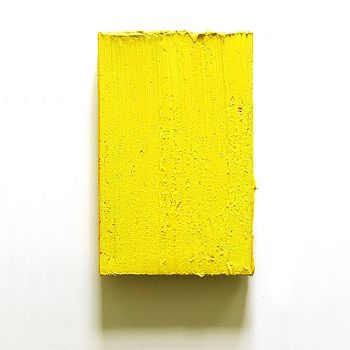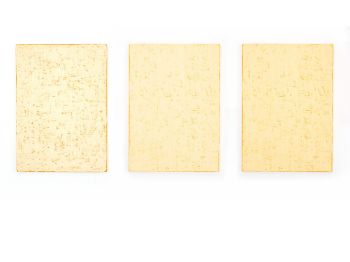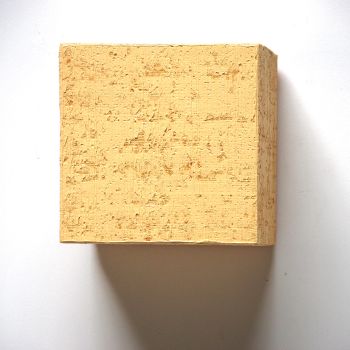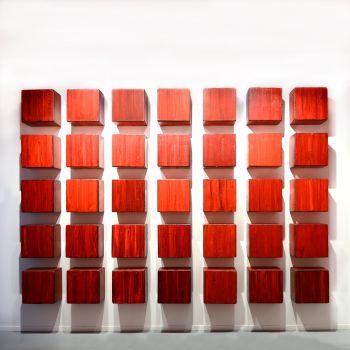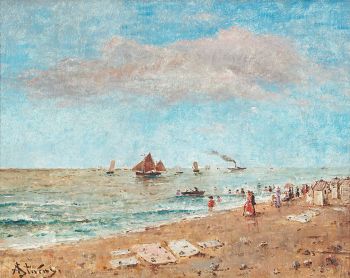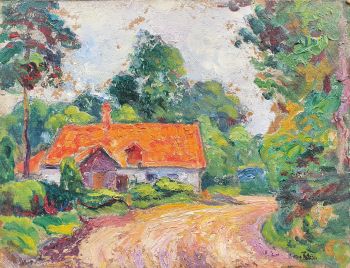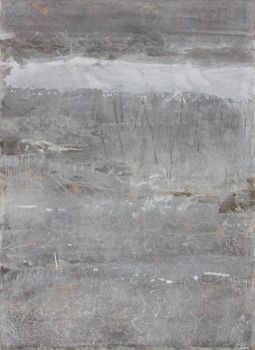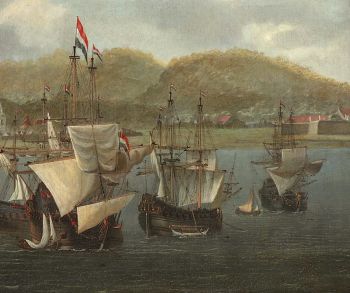An extraordinary pair of Indian ebony low chairs formerly owned by the Duke of Westminster Coromande 1680 - 1700
Artista Sconosciuto
EbanoLegna
85 ⨯ 50 ⨯ 45 cm
Prezzo su richiesta
Zebregs & Röell - Fine Art - Antiques
- A proposito di opere d'arteAn extraordinary pair of Indian ebony low chairs formerly owned by the Duke of Westminster
Coromandel coast, possibly Madras, 1680-1700
Both overall densely carved with an array of mermaids, birds, fish, mythological figures and floral and vine motifs, the back-rails are centered by a parrot (the attribute of Kama, the Hindu god of love) below a scallop shell (an attribute of Aphrodite/Venus) with a fleur-de-lis (a symbol of the Virgin Mary), the shell supported by two small human figures and a pair of mermaids, another Western element, but also a representation of the Hindu snake goddess Nagini, with crouching figures as finials, reminiscent of deity figures, with cane seatings.
H. 85 x W. 50.5 x D. 45 cm
Height of seat 41.5 cm
An identical chair is illustrated in Het Hollandsche Koloniale Barokmeubel, Dr. V. I. van de Wall, .1939, fig. 26. The Provenance of that chair is given as the Duke of Westminster, Eaton Hall, Chester. Before restoration the present pair had identical upholstered seats and the same casters as the chair of the Duke of Westminster. Therefore it seems safe to assume that the provenance of the present pair also is the Duke of Westminster, Eaton Hall in Chester. In the seat rails of the present chairs both are numbered II and III respectively, so they probably once belonged to a larger set in Eaton Hall.This type of chair usually turns up in England and seldom in Holland although they were also ordered by the Dutch on the Coromandel Coast of India. Possibly the Hindu motives of animals and humans in the carvings of these “Kust stoelen” were eventually not greatly appreciated in Muslin/Calvinist Java/Batavia. These high points in ebony furniture making were made by Hindu craftsmen in South India converted to Roman Catholicism by the Portuguese in the 16th and 17th centuries. These furniture makers, with their origins in the Hindu world, combined Hindu and Christian motives in a manner which was not seen again in furniture from India after the 17th century.
As in other known examples, the carving is in the round. The carvings on these two chairs bear close resemblance to the carving of the head- and foot-boards of the ebony rocking cradle in the Rijksmuseum Amsterdam (BK-1966-48, illustrated in: Asia in Amsterdam, 2015, cat. 26, p.108). - A proposito di opere artista
Può succedere che un artista o un creatore sia sconosciuto.
Alcune opere non sono determinate da chi sono state realizzate o sono state realizzate da (un gruppo di) artigiani. Esempi sono statue dell'antichità, mobili, specchi o firme non chiare o leggibili ma anche alcune opere non sono affatto firmate.
Inoltre puoi trovare la seguente descrizione:
•"Attribuito a …." A loro avviso probabilmente opera dell'artista, almeno in parte
•“Studio di ….” o “Officina di” A loro avviso un'opera eseguita nello studio o nella bottega dell'artista, eventualmente sotto la sua supervisione
•“Cerchio di…” A loro avviso un'opera del periodo dell'artista che mostra la sua influenza, strettamente legata all'artista ma non necessariamente al suo allievo
•"Stile di..." o "Seguace di..." A loro avviso un'opera eseguita nello stile dell'artista ma non necessariamente da un allievo; può essere contemporaneo o quasi contemporaneo
•“Modalità di…” A loro avviso un'opera nello stile dell'artista ma di epoca successiva
•"Dopo …." A loro avviso una copia (di qualsiasi data) di un'opera dell'artista
•“Firmato…”, “Datato…” o “Iscritto” A loro avviso l'opera è stata firmata/datata/inscritta dall'artista. L'aggiunta di un punto interrogativo indica un elemento di dubbio
•"Con firma....", "Con data...", "Con iscrizione..." o “Riporta firma/data/iscrizione” a loro avviso la firma/data/iscrizione è stata aggiunta da qualcuno diverso dall'artista
Sei interessato ad acquistare questa opera d'arte?
Artwork details
Related artworks
- 1 - 4 / 12
Johannes La (le) Blanck
Un set di ampolle d'argento olandese a doppio uso1786
Prezzo su richiestaJacob J. Roosjen SRI
Artista Sconosciuto
UN NETSUKE MARINO IN AVORIO DI UN OLANDESE CHE TIENE UN FAN . CINESE18th century
Prezzo su richiestaZebregs & Röell - Fine Art - Antiques
 A cura di
A cura diDanny Bree
Artista Sconosciuto
UN RARO GRANDE TELESCOPIO GIAPPONESE IN PELLE LACCATA1750 - 1800
Prezzo su richiestaZebregs & Röell - Fine Art - Antiques
1 - 4 / 24Alfred Stevens
ZEEGEZICHT MET ZEILSCHEPEN, STOOMBOTEN EN FIGUREN1823 - 1906
Prezzo su richiestaGalerie Het Noorderlicht
Artista Sconosciuto
Antica icona russa in legno: Arcangelo Gabrieleearly 17th
Prezzo su richiestaKunsthandel H.W.C. Dullaert Icons
1 - 4 / 24Roland Strasser
Geisha giapponese20th century
Prezzo su richiestaZebregs & Röell - Fine Art - Antiques
Artista Sconosciuto
A rare Japanese export lacquer medical instrument box1650 - 1700
Prezzo su richiestaZebregs & Röell - Fine Art - Antiques
1 - 4 / 12







